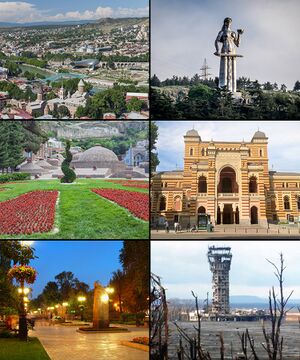Sopron: Difference between revisions
mNo edit summary |
mNo edit summary |
||
| Line 66: | Line 66: | ||
}} | }} | ||
'''Sopron''' (Ruvelkan Script: ''Ḻīũṷīṵ''; Karvelebi: ''სოფრონი'') is a city in east-central [[Ruvelka]] in the historically disputed [[Zemplen|Zemplen Region]] between Ruvelka and [[Syara]]. Following the end of the [[Zemplen War]], Sopron is recognized as part of Ruvelka and the current capital of the [[Zemplen Autonomous Region]]. It built on the banks of the Rioni River and has a population of 248,687. Between the 1700s and the modern-era, Sopron has changed hands several times and has been characterized as a point of contention between the regions historical nation-states. | '''Sopron''' (Ruvelkan Script: ''Ḻīũṷīṵ''; Karvelebi: ''სოფრონი'') is a city in east-central [[Ruvelka]] in the historically disputed [[Zemplen|Zemplen Region]] between Ruvelka and [[Syara]]. Following the end of the [[Zemplen War]], Sopron is recognized as part of Ruvelka and the current capital of the [[Zemplen Autonomous Region]]. It is built on the banks of the Rioni River and has a population of 248,687. Between the 1700s and the modern-era, Sopron has changed hands several times and has been characterized as a point of contention between the regions historical nation-states. | ||
Because of its location on the crossroads of northwestern Siduri, it became an important city along continental trade routes and continues to be an important transit route for trade projects. It’s history can be easily reflected in its varying architecture which is a mix of medieval, neoclassical, Syaran, Ruvelkan Traditional, and modern structures. Sopron has long been home to people of multiple cultural, ethnic, and religious backgrounds, but is characterized for being the ancestral home of the Karvelebi people. | Because of its location on the crossroads of northwestern Siduri, it became an important city along continental trade routes and continues to be an important transit route for trade projects. It’s history can be easily reflected in its varying architecture which is a mix of medieval, neoclassical, Syaran, Ruvelkan Traditional, and modern structures. Sopron has long been home to people of multiple cultural, ethnic, and religious backgrounds, but is characterized for being the ancestral home of the Karvelebi people. | ||
Revision as of 21:14, 22 July 2020
This article is incomplete because it is pending further input from participants, or it is a work-in-progress by one author. Please comment on this article's talk page to share your input, comments and questions. Note: To contribute to this article, you may need to seek help from the author(s) of this page. |
Sopron
Ruvelkan: Ḻīũṷīṵ Karvelebi: სოფრონი | |
|---|---|
City of Regional Significance | |
 Clockwise from top: View of Sopron; Karvelebi Deda; Bukia Ballet Theater; Ruins of Sopron Regional Airport during the Zemplen War; Davituliani street at night; Sopron’s ancient district. | |
| Country | |
| District | Zemplen Autonomous Region |
| Founded | 455 CE |
| Government | |
| • Mayor | Mariya Rekhviashvili |
| Area | |
| • Total | 186.7 km2 (72.1 sq mi) |
| Elevation | 225 m (738 ft) |
| Highest elevation | 481 m (1,578 ft) |
| Population (2019) | |
| • Total | 248,687 |
Sopron (Ruvelkan Script: Ḻīũṷīṵ; Karvelebi: სოფრონი) is a city in east-central Ruvelka in the historically disputed Zemplen Region between Ruvelka and Syara. Following the end of the Zemplen War, Sopron is recognized as part of Ruvelka and the current capital of the Zemplen Autonomous Region. It is built on the banks of the Rioni River and has a population of 248,687. Between the 1700s and the modern-era, Sopron has changed hands several times and has been characterized as a point of contention between the regions historical nation-states.
Because of its location on the crossroads of northwestern Siduri, it became an important city along continental trade routes and continues to be an important transit route for trade projects. It’s history can be easily reflected in its varying architecture which is a mix of medieval, neoclassical, Syaran, Ruvelkan Traditional, and modern structures. Sopron has long been home to people of multiple cultural, ethnic, and religious backgrounds, but is characterized for being the ancestral home of the Karvelebi people.